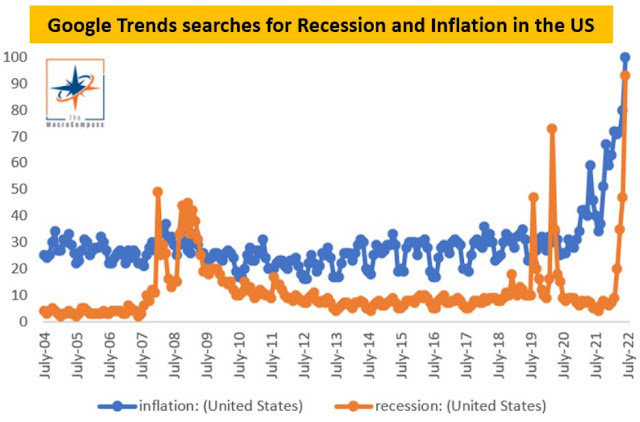Market participants will sometimes surprise you. Usually when you are 6 weeks into a rally, making higher highs and higher lows, with a few face rippers, the crowd starts souring on put options and starts betting on upside through call options. Well, that's just not happening. As much as I want to believe that investors are believing in this rally and getting complacent, the numbers don't back it up.
The short term speculators (what most options volume is) are betting on downside during this rally. The CBOE total put/call ratio was 1.05, which is quite high on a day that the SPX was up 2.6%, and the NDX up 4.2%. It's rare. And it makes me uncomfortable playing the short side at this moment.
There has to be a lot of underlying strength and demand for stocks to rally so strongly while the short term options flow is acting as a headwind (call selling/put buying). Usually, those OTM put options end up decaying to zero and dealers have to unwind their bearish hedges which results in net buying back of deltas, which pushes stocks up.
So the Fed yesterday decided to back away from giving forward guidance, although Powell noted that the rate projections in June seemed reasonable for the rest of the year. I didn't think he was more dovish or hawkish than expectations. Just mealy mouth as usual. No surprise there. But its clear that he's not getting ahead of inflation. He seems reluctant to push Fed funds rates higher than market pricing, which means we're unlikely to see 3.5% Fed funds or higher. With a weakening economy, the bond market has turned the other way, reducing rate hike expectations since the June FOMC meeting, and now aggressively pricing in 2023 rate cuts.
If there is one thing you can bet on with the Fed, and especially Powell, he will not try to fight the bond market. He tried to do that for a brief period of time in late 2018 and he quickly caved in and made a dovish pivot. I don't expect the bond market to relent in its pursuit for lower rates. The economy is weak, the bond market sees it, everyone knows it.
With Powell trying to go for a soft landing, the financial markets see an opening and are now going to push Powell until he caves. They see he has no backbone when it comes to fighting inflation. They are expecting a dovish pivot and will end up getting it, although probably only after you see stocks much lower and bonds much higher from here (by October?). If both stocks and bonds start demanding a halt to the rate hikes and even demanding rate cuts, Powell will change his language and then deliver what the market wants. That's just how he and the Fed works.
In the markets, you have to trade what you think will happen, not what you want to see happen. I'd like to see the Fed really hammer the financial markets to kill inflation but that's just not going to happen. The high probability scenario is a Powell pivot in the fall, as stocks go lower on weaker earnings expectations and bonds go higher on weakening economic data. Once he pivots in the fall, expect a surge higher in stocks, commodities, sticky high inflation, and a weaker dollar soon afterward. Then Powell will really be in a bind as inflation stays high after his "pivot". That's when you get the next leg lower in stocks that really demoralizes investors.
Powell wants to be remembered as a great Fed chair like Paul Volcker, but he is just another Arthur Burns/Ben Bernanke clone, a money printer that has no backbone. He is a politician first, central banker second. Powell's DNA is like most politicians: short term pleaser, not a long term thinker. He will remembered as just another cookie cutter mediocre overly dovish Fed chairman when his reign is over.
Staying on the sidelines until I see signs that speculators are buying into the rally. Maybe after all the big tech earnings are over this week, you'll finally get them to embrace it. Will need to see real data to back it up.

























